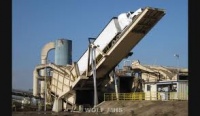Difference between revisions of "Truck Unloading Systems"
(Created page with "Category: Loading and Unloading Equipment{{Knoppen}} <noinclude><!------------------------------------------------ * READ THIS FIRST * Only edit this page if you can imp...") |
PurplePen19 (talk | contribs) |
||
| Line 7: | Line 7: | ||
* Please start editing this page after the /noinclude | * Please start editing this page after the /noinclude | ||
* -------------------------------------------------></noinclude> | * -------------------------------------------------></noinclude> | ||
[[File:Truck Unloading Systems_1.jpg|thumb|200px|right|Truck Unloading Systems]] | |||
'''Truck Unloading Systems''' is designed to monitor off loading from one truck bay for hydrocarbon fluids such as condensate or light to heavy density crude oil. The truck unloading system utilizes a Micro Motion Coriolis meter for volume flow measurement and water cut determination. The meter provides three on line measurements that include mass flow, density and temperature. The volume measurement is derived from the mass and density variables (volume = mass/density). The meter can be used over a wide range of densities and volume flow rates providing custody transfer accuracy. The system water cut determination is typically provided in the following methods: | |||
0-5% Density Compensated Drexelbrook Cut Monitor | |||
0-100% or 5-100% Net Oil Density Comparison using Micro Motion | |||
0-100% Microwave water analysis using Phase Dynamics (Heavy Oil Unloading) | |||
==Videos== | |||
<youtube>SdpjuWfG2D4</youtube> | |||
Latest revision as of 07:26, 4 September 2013
Truck Unloading Systems is designed to monitor off loading from one truck bay for hydrocarbon fluids such as condensate or light to heavy density crude oil. The truck unloading system utilizes a Micro Motion Coriolis meter for volume flow measurement and water cut determination. The meter provides three on line measurements that include mass flow, density and temperature. The volume measurement is derived from the mass and density variables (volume = mass/density). The meter can be used over a wide range of densities and volume flow rates providing custody transfer accuracy. The system water cut determination is typically provided in the following methods:
0-5% Density Compensated Drexelbrook Cut Monitor 0-100% or 5-100% Net Oil Density Comparison using Micro Motion 0-100% Microwave water analysis using Phase Dynamics (Heavy Oil Unloading)
Videos
